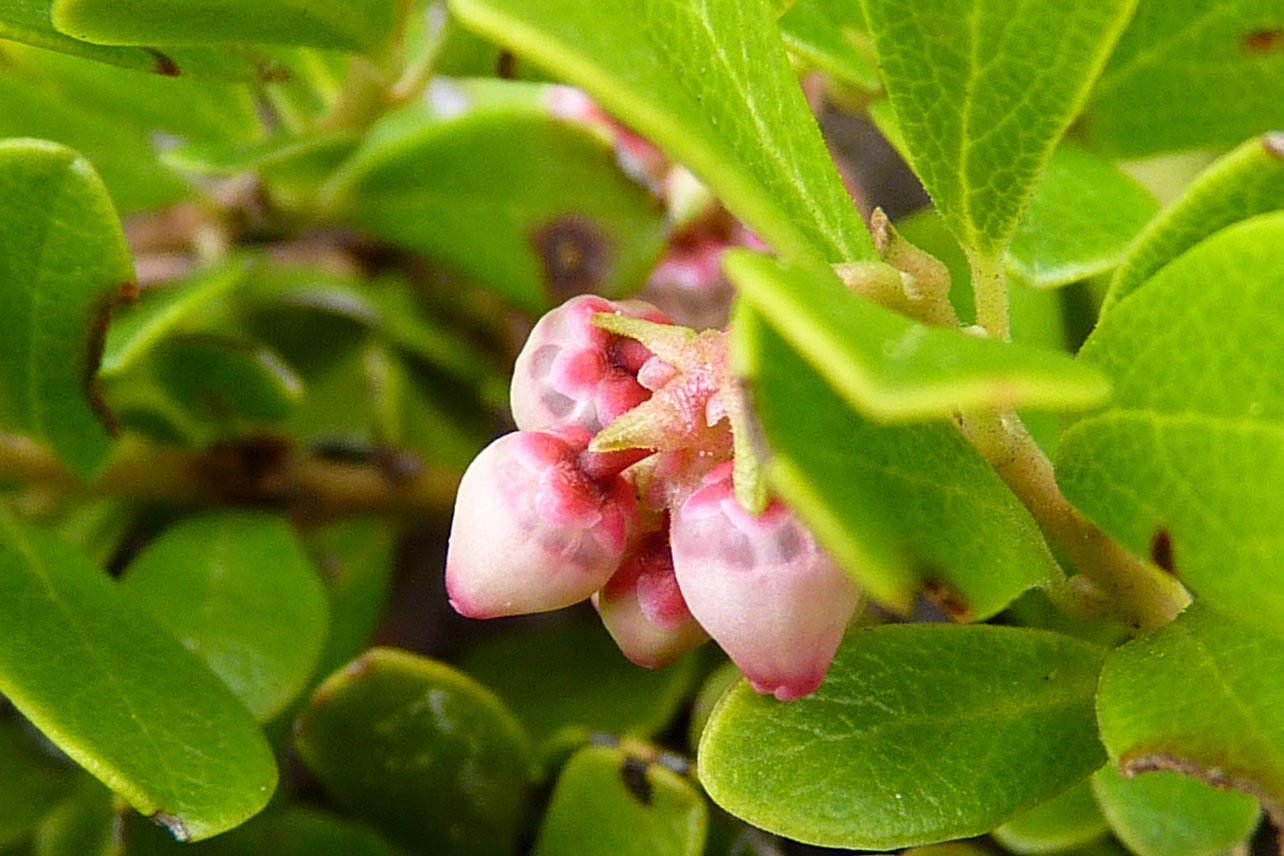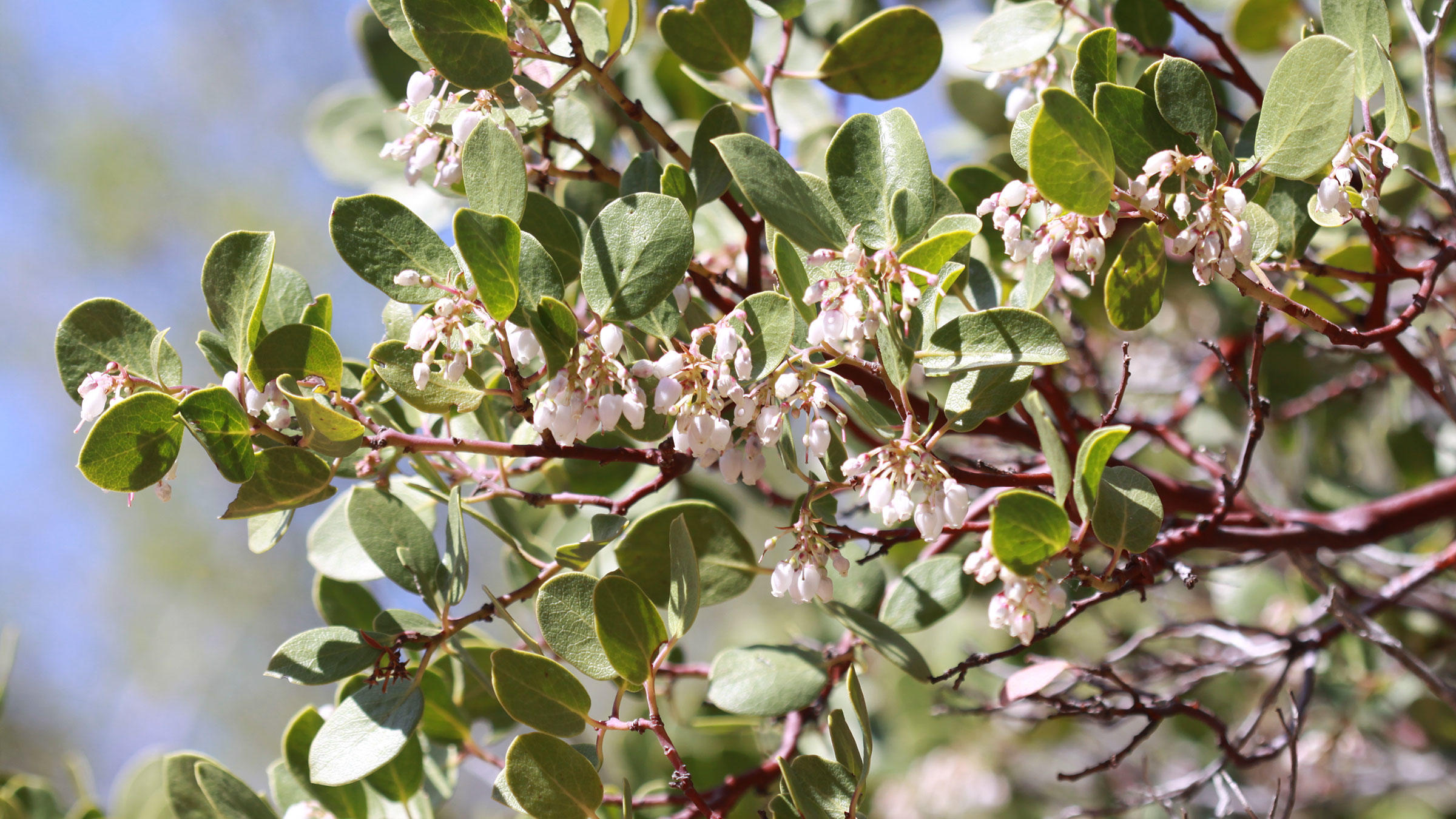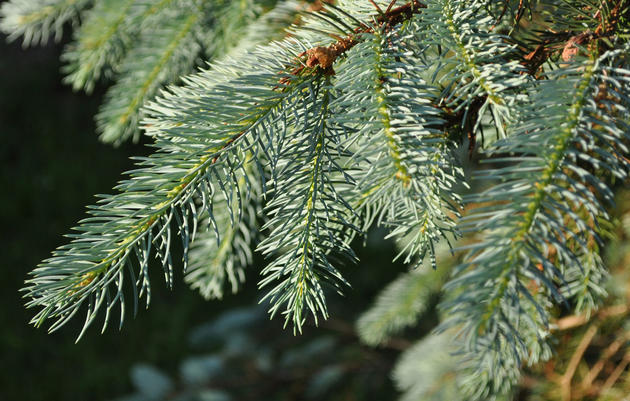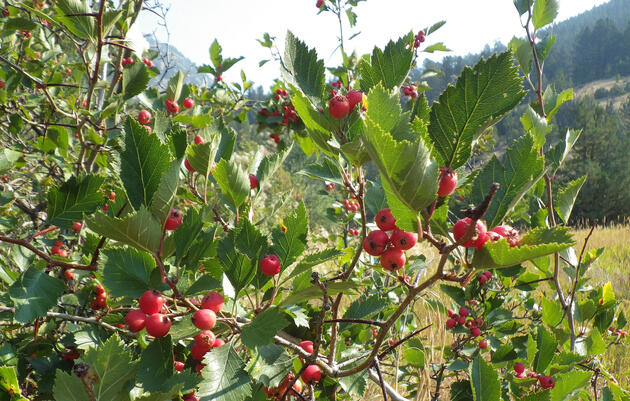Our Plant Profiles from Plant Select® feature plants that thrive in the Rocky Mountain region and also provide critical needs for wildlife.
Western winter gardens are made all the more lovely with native evergreens, whether conifers such as pines, spruce and junipers, or broad-leaved evergreens such as euonymus and boxwood. At this time of year, the colors of summer and fall have faded into our memories, and our yearning for spring has already begun.
Additionally, these hardy plants are adapted to Colorado's montane winter climate and provide food and shelter for wildlife. Below are a few species that we recommend.
Kinnickinnick
Kinnickinnick (Arctostaphylos uva-ursi) is a broad-leaved evergreen groundcover, used regionally for many years. Kinnickinnick is native to more than half of the United States and every province in Canada. An extremely hardy and adaptable species, it’s primarily been the clones from the two coasts (‘Point Reyes’, ‘Woods Compact’ and ‘Massachusetts’), that have been grown commercially all these years, not selections from our western states. Some local and regional growers are collecting local seed and providing western native selections of kinnickinnick.

Manzanitas
Only recently have our larger cousins to kinnickinnick, the manzanitas, become more commercially available. The first were introduced by Plant Select® in 2005 (Mock bearberry) and 2006 (Panchito), two selections of natural hybrids from the Uncompaghre Plateau in western Colorado. The largest and most vigorous of the group, Chieftain, was introduced just last year in 2013.
All three are adapted to our dry climate, mineral soils, fluctuating temperatures and high altitude winter sunshine, making them perfect choices for winter color and interest for our region.
The beauty of these slightly larger Arctostaphylos goes beyond the green relief of their leaves in winter gardens; it also comes from the strong, undulating branches and their deep red-mahogany colored bark.
In late winter and early spring, lovely pink heather-like flowers hang in small clusters from the branches, lasting for nearly six weeks, or until temperatures begin to rise in earnest. Mature plants will often produce dark red, tiny apple-like berries in summer. (Hence the common name manzanita, "little apple" in Spanish.)
Wildlife benefits
The primary benefits of the medium-sized arctostaphylos (A. x coloradensis) for wildlife lies in the year-round cover provided by the evergreen leaves. Undulating branches allow for shelter of smaller songbirds and mammals, and leaf litter beneath often is home to many insects, supplying food during much of the year.
The groundcover kinnickinnick (A. uva-ursi) is a much more prodigious fruit-producer, and the edible “berries” are regularly eaten by bears, chipmunks, Townsend's Solitaires and other medium to large fruit-eating songbirds.
Growing tips
The most important factor to consider when growing arctostaphylos is to make sure excellent drainage is provided. This is most easily accomplished with the use of raised beds, or by incorporating sand and small gravel into existing soils. Arctostaphylos also tend to be a bit slow in the first year or two, but once roots are established, they take off with great vigor.
Colorado Manzanitas at a Glance
- Arctostaphylos x coloradensis ‘Chieftain’
- Height: 18” - 36”
- Width: 5’ – 8’
- Arctostaphylos x coloradensis ‘Panchito’
- Height: 10” – 15”
- Width: 24” – 36"
- Arctostaphylos x coloradensis, Mock Bearberry
- Height: 10” – 15”
- Width: 36” – 6'








